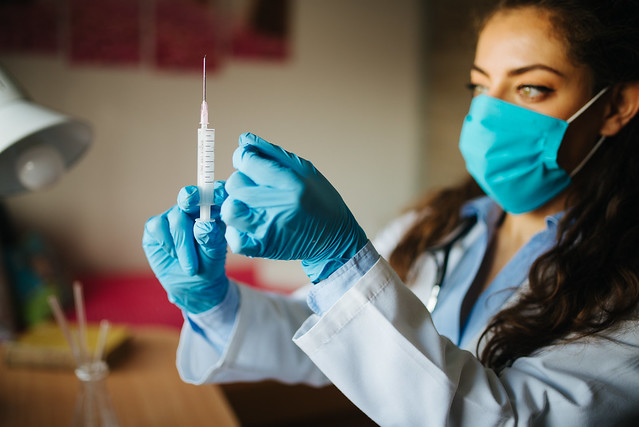OPINION: Monkeypox virus proves a potential threat to the US

Across 18 states in the country, 72 cases of the monkeypox virus have been reported as of June 14, according to the Center for Disease Control and Prevention. The number of cases is still on the rise in Florida and elsewhere, proving a reason for caution.
Monkeypox presents more of a serious health threat than currently estimated by health officials. Strengthening the public health system and building trust in the wake of COVID-19 would help the country, and Florida, contain this infectious disease.
The virus likely poses low risk levels, according to Raj Panjabi, a global health security director at the National Security Council. Monkeypox appears in the form of flu-like symptoms and a rash, but isn’t likely to get worse.
Such response is similar to that of health administrators at the beginning of the pandemic, identifying coronavirus as no reason for “excessive concern,” according to an April 11 interview with White House COVID-19 response coordinator Ashish Jha.
Lack of preparedness at the outset has led to over one million deaths and roughly 85 million COVID-19 contractions as of June 14, as per Our World in Data.
Human-to-human transmission of monkeypox is measured as low, happening only during skin-to-skin contact over a prolonged period, according to the CDC.
This is eerily familiar to the early days of COVID-19, when experts also believed coronavirus could only spread through respiratory droplets and contaminated surfaces rather than human-to-human transmission.
However, later research proved COVID-19 is airborne and can spread through much smaller particles, making it much more contagious than previously assumed, according to the U.S. Environmental Protection Agency.
Future investigations regarding monkeypox could also evolve, changing health administrators’ perception of its danger level.
The situation is alarming, considering the monkeypox outbreak in around 30 non-endemic countries, with cases approaching 1,900, mostly in Europe. The UK is witnessing the most severe figure, with 470 confirmed cases as of June 14, according to the 2022 CDC Outbreak Global Map.
The U.S. is presented with a serious transmission threat, highlighting the need for stricter travel precautions. Quarantine regulations or requirements for laboratory confirmed negative results could provide safer traveling, as per the CDC guidelines.
While some might claim the U.S. is prepared for future health risks, the country’s response throughout the pandemic has been plagued with failures.
A clear example is the CDC’s inability to conduct “community-based surveillance,” thereby being unable to detect the virus’ reach earlier in the pandemic, according to a March 2020 New York Times article. This was when the U.S. ranked first among 195 countries in pandemic preparedness in 2019, as ranked by the Global Health Security Index.
The government should further invest in health infrastructure and facilities to ensure timely response to the potential danger of monkeypox. These might include ventilators, ambulances and personal protective equipment to minimize health care workers’ exposure to transmissible diseases, according to the White House COVID-19 preparedness plan.
Building trust is critical, considering the interdependence of countries in the 21st century. Mutual cooperation can lead to the improvement in data collection and sharing as well as the development of biomedical and technological advances, as suggested by The Guardian.
With monkeypox virus cases still on the rise, health officials need to raise greater awareness about the dangers involved for effective preparation strategies. Multimedia channels should be utilized to disseminate information regarding the threat, prevention and treatment methods of monkeypox to educate the public before the situation intensifies.
Monkeypox could evolve to establish itself as a widespread human pathogen, and potentially become the next big one. The U.S. had better be safe than sorry.







